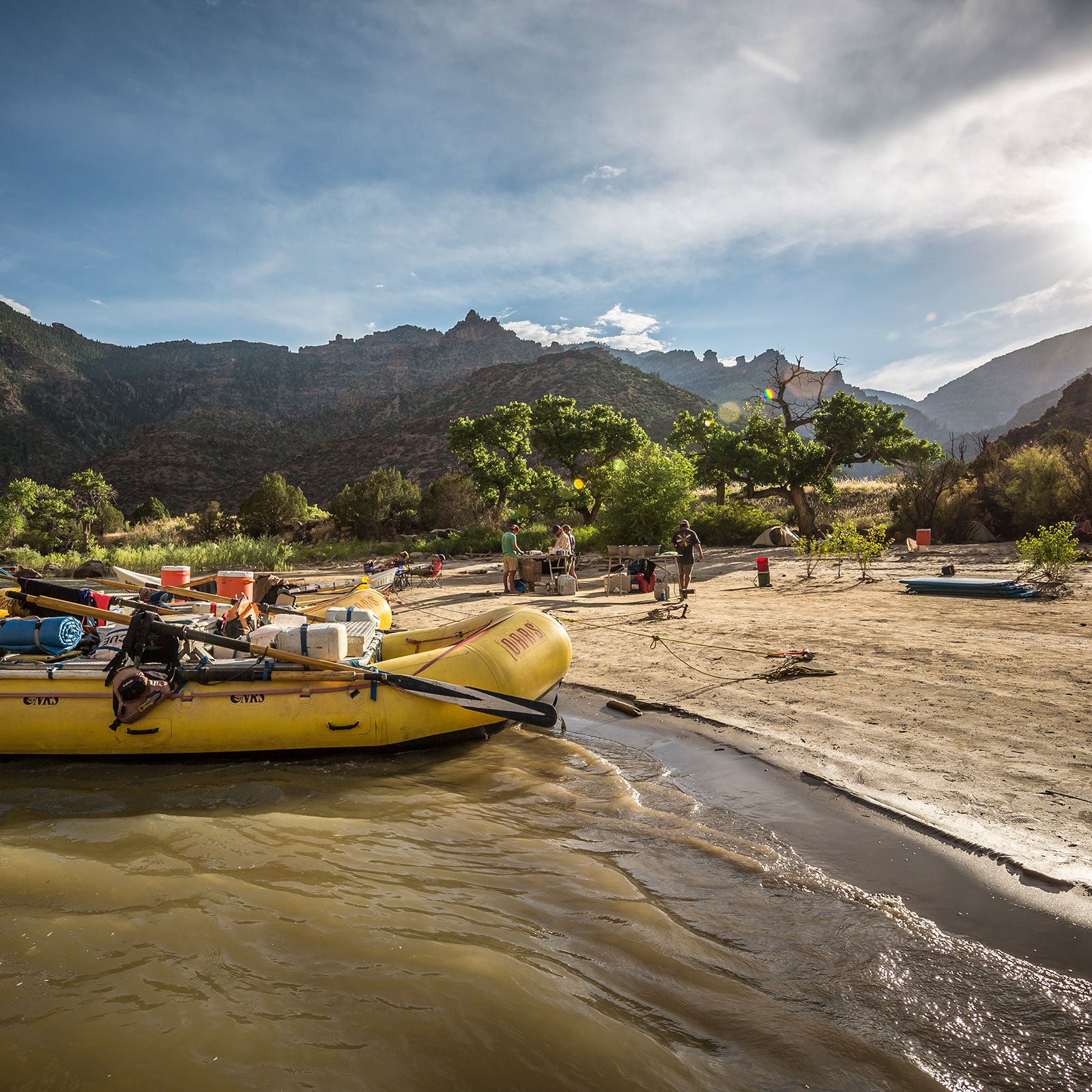From the first paragraph of her new book�� ($25, University of Chicago Press), out April 1, Heather Hansman plops us right into the drink with her. She weaves journalistic research into the tale of her mostly solo 2016 pack-raft trip from the headwaters of the Green River, in Wyoming,��to its confluence in Utah. The book explains the history of the river and investigates its current threats, but it reads more like an adventure yarn than some of its cousins in the western-river canon.
As the greatest tributary of��the overworked Colorado River, supplies water to 33 million people, and it holds precious unallocated acre-feet of water, so it’s a lively illustration of the West’s battles over the resource��in an increasingly dry landscape. The river carries Hansman through Wyoming ranches, natural-gas fields, cities, and national parks, and she finds that seemingly everyone wants a piece of its pie. So she follows her curiosity, learning where the water goes—and who’s fighting over what.
From Hansman’s speeding boat, we feel the river rise with an unexpected dam release that also floods farmers’ fields and flushes valuable trout from eddies where fishing guides take high-paying clients. From her seat at a public meeting, we feel the heat from farmers angry that endangered fish seem to carry more weight than they do when it comes to river policy and water use. “I really thought the woman in the row in front of me was going to stand up and punch someone,” Hansman told ���ϳԹ���. And we visit��the boom-and-bust town of Vernal, Utah, where, Hansman writes,��“if you’re a liberal or a paddler passing through, you can expect to pay a buck extra for your drink at George Burnett’s I Love Drilling Juice and Smoothie Cafe.”
Sitting down with water users all along the river, Hansman learns what’s at stake both upstream—vast amounts of agricultural land��with water rights changing hands in the near future—and downstream—cities with increasing population and energy needs. She wades through the notoriously tangled weeds of western water law, explaining it in easy-to-understand terms, and she comes to grips with her own assumptions about what the western landscape should look like in the future, from flood irrigation on farmland to dam removal. Hansman, an environmental reporter and former raft guide, says her misconception going into the trip was that things would look more black and white. “I think it comes back to the idea that nobody’s the bad guy,” she says. The endangered-fish biologist, the engineer at the dam, the farmer upstream—each wants to do good. “They’re just trying to do a totally different type of good,” Hansman says.��And when opposing sides actually sit in the same room, she says, real work starts happening.
At a short-notice public meeting in Vernal, Hansman witnesses people’s anger simmering down when they feel heard—when they see the other side as people, when they all have a chance to apologize and explain��and maybe even break down a few entrenched stereotypes. “I think a lot of that comes from the face to face, getting everyone in the same room, which is really, really hard to do,” she says. “And I think part of the problem [in the West as a whole] is that’s not realistic to do on a seven-state basis.”
Hansman brings a sense of humility to both her reporting and the river trip itself, admitting to moments of fear and failures of confidence during her weeks of solitude in an inflatable kayak. “There were points where I was totally freaked out, especially the first couple weeks,” she says. “I was thinking, I’m not capable of this,��or What’s that noise in the night?��That was definitely there, but I didn’t want that to stop me. The fear factor felt reduced over time.”
By placing herself directly in the current of the river and taking us with her, Hansman gives us a more tangible understanding of what’s at stake. “I had to be gone, to be in it, to see the good and the bad,” she writes. “I learned that you can care about places��and want to protect them, but then you’re fighting for abstractions.” In Downriver, she makes the Green River—and with it, all the water of the West—just a little less abstract for the rest of us.


